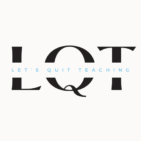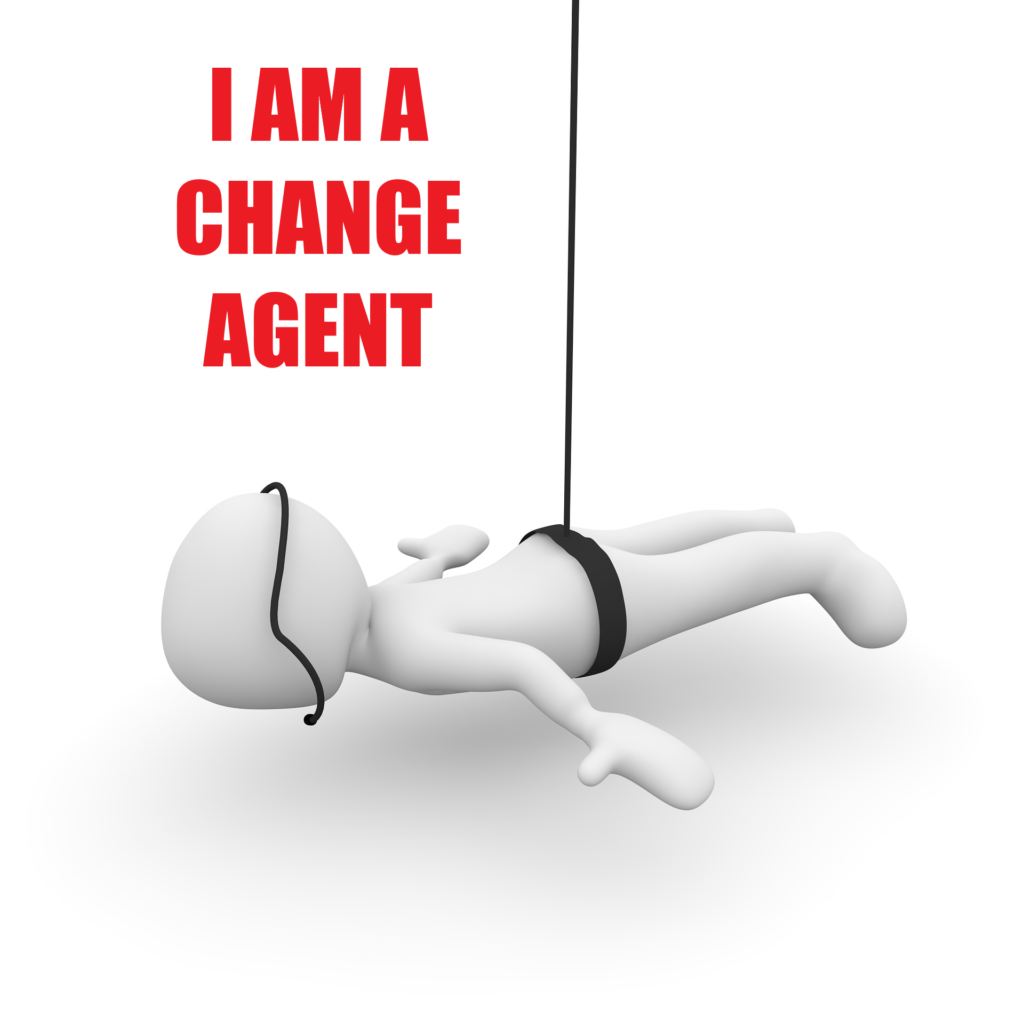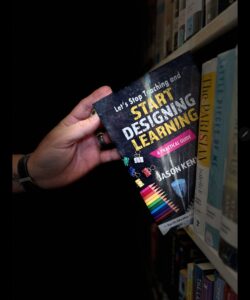If you are familiar with the work of John Hattie and Visible Learning, you may know of the 10 Mindsets he identified for educators who wish to transform the classroom and promote learning over teaching. As an instructional coach, I had these posted in my room and used them in my discussions with fellow teachers. They helped focus our work together and really solidified what our true calling to and purpose in education was. So for the next few weeks, I would like to put some attention on the mindframes and how they should influence our work in designing learning rather than teaching.
Mindframe #1: “I am a change agent.” Sounds simple enough. It is the shortest of the mindframes, but the impact it has when fully embraced and implemented by teachers can be the most powerful thing that can happen in a school. With that said, the English major in me wants to take this short, seemingly simple sentence, and unpack it to reveal the potential hiding in plain sight to quit teaching and start designing learning.
The first word: “I.” So what? Well, it states that I am a change agent. It points directly at us. Who can make change happen? I can. Who is responsible for things being able to change? I am. Who can we look to when we want things to change? Ourselves. Some educators say, “Well, the leadership makes the change, or the district or state initiatives make the change. I don’t have the power or influence to change things.” No, change, true and lasting change, takes place at the classroom level with individuals. I can make change happen. I am responsible for things being able to change. I look to myself when I want things to change. I am also the one to hold accountable when things do NOT change and should. Why? Because I am a change agent.
“Am” is a statement of complete ownership. It is not a might be, or could be or should be. Am implies complete dedication and commitment to the claim. Am is not conditional. When I AM, I am all the time, not only when it is comfortable and suits my needs. I am when things are easy and going great, but I am also when things are challenging and obstacles get in the way. I am when it forces me out of my safety net and comfort zone as a teacher and points me in a new direction of intentionally making specific design choices for learning in my classroom for my students. I am when all that time spent in design ahead of time reaps a harvest of real, observable learning in my students. I am and will continue to be a change agent for learning.
“Change” is a scary word to some. And why wouldn’t it be. It is a deviation from what we know, are familiar with, and feel safe in. But, sometimes that safe place is one of complacency and stagnation that centers on benefiting adults rather than boosting student learning. Change is a constant companion to us all, especially in education. With that said, education has, at its core, remained the same for over a century. We, educators, say that it has changed, but in reality the practice of teaching has generally looked the same for a long, long time. Teachers decimate information, students work and may show learning was accomplished, and teachers access. Then the cycle repeats. Thousands of classrooms look the same across the world with teaching at their centers. But, if we are indeed CHANGE agents, we must embrace and work toward it in everything we do for student learning.
I like the word “agent.” It makes me think of James Bond or any other government operative sent to save the world somehow. We ARE agents, but not agents of the CIA or FBI. We are agents of change. That means that we work FOR change, not against it. We work to save our world of the classroom by working for change in our practice and profession. It’s our highest calling and center of the job. “Agent” also reminds me of my AP Chemistry class in high school. We worked with chemical agents all the time and combining a certain agent with another chemical produces a desired chemical reaction. We educators and designers of learning are just like those chemicals. We are agents that, once added, should create a reaction that produces change. If we aren’t producing change, then we aren’t the agent we are meant to be. It is not that our shelf-life is over and we’ve expired, losing our effectiveness. Being an agent is a choice. One we must make every day to cause that reaction to happen, resulting in optimal student learning.
So, ask yourself these questions before committing to the statement. Do I believe that I can make a change? Do I commit to being the learning designer I need to be no matter what? Do I embrace change and use it to promote more learning and less teaching? Do I want to be an active agent that reacts with instructional design to produce powerful learning? If so, then claim it today. I am a change agent.


